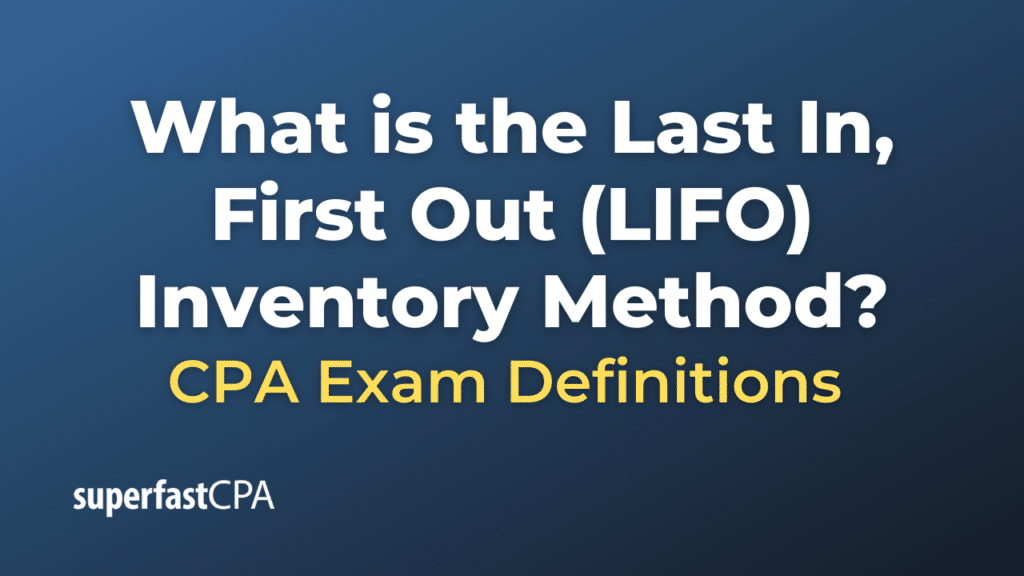Last In, First Out (LIFO) Inventory Method
The Last In, First Out (LIFO) method is an inventory valuation approach used in cost accounting. This method assumes that the last items added to inventory are the first ones to be sold.
By using the LIFO method, businesses can match their latest costs with their revenues. This approach can be particularly useful during periods of inflation, when the cost of inventory tends to rise. By selling the most recently purchased (and likely more expensive) items first, businesses can keep their cost of goods sold (COGS) high and net income lower, which results in less income tax.
However, it’s important to note that the LIFO method doesn’t necessarily reflect the physical flow of goods. A company might sell older goods before newer ones, but for accounting purposes, they can assume a LIFO inventory system.
Also, it’s worth mentioning that while LIFO is accepted under Generally Accepted Accounting Principles (GAAP) in the United States, it is not accepted under International Financial Reporting Standards (IFRS). Therefore, companies operating in countries using IFRS cannot use the LIFO method for financial reporting purposes.
Example of the Last In, First Out (LIFO) Inventory Method
Imagine a business that sells specialty coffee beans. Over three days, the company purchases batches of the same type of coffee beans at different prices:
- Day 1: 100 bags at $5 each
- Day 2: 200 bags at $6 each
- Day 3: 300 bags at $7 each
Now, if the company sells 150 bags, and it applies the LIFO inventory method, it will assume that the last bags purchased (the most expensive ones) are the first to be sold.
So, the cost of goods sold (COGS) would be calculated as follows:
- First 100 bags sold are from Day 3 stock: 100 bags * $7/bag = $700
- The remaining 50 bags sold are from Day 2 stock: 50 bags * $6/bag = $300
The total COGS will therefore be $1,000 ($700 + $300).
And the remaining inventory would be:
- 250 bags from Day 3: 250 bags * $7/bag = $1,750
- 150 bags from Day 2: 150 bags * $6/bag = $900
- 100 bags from Day 1: 100 bags * $5/bag = $500
The total remaining inventory would be valued at $3,150 ($1,750 + $900 + $500).
This is a simplified example, but it illustrates how LIFO works. By selling the most expensive items first, LIFO increases COGS and decreases reported profit, which can lead to a decrease in taxable income during periods of rising prices.













